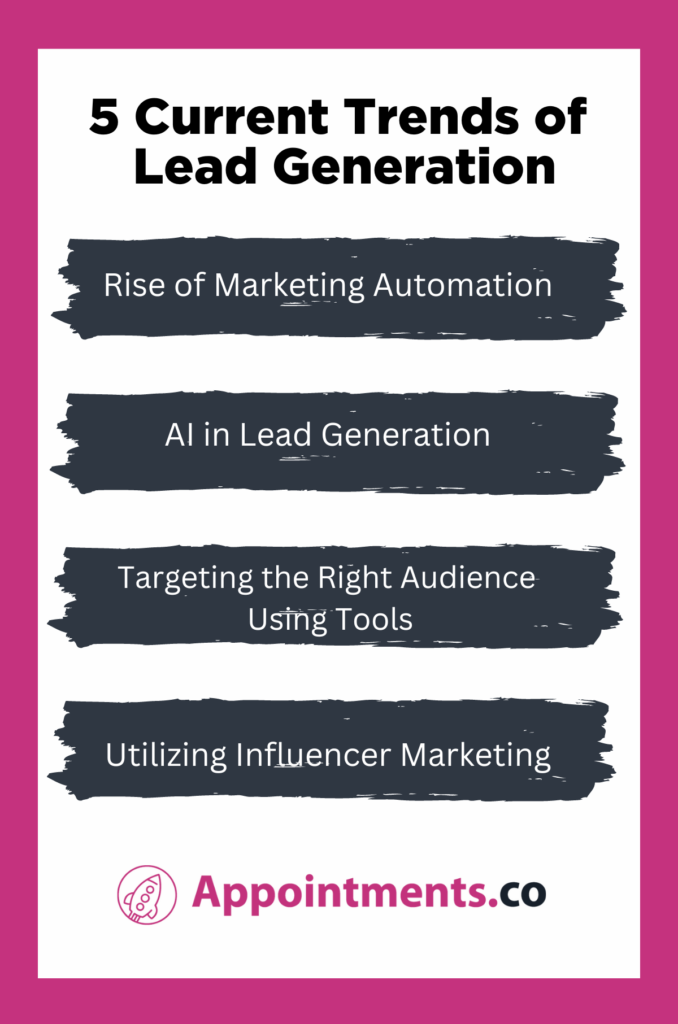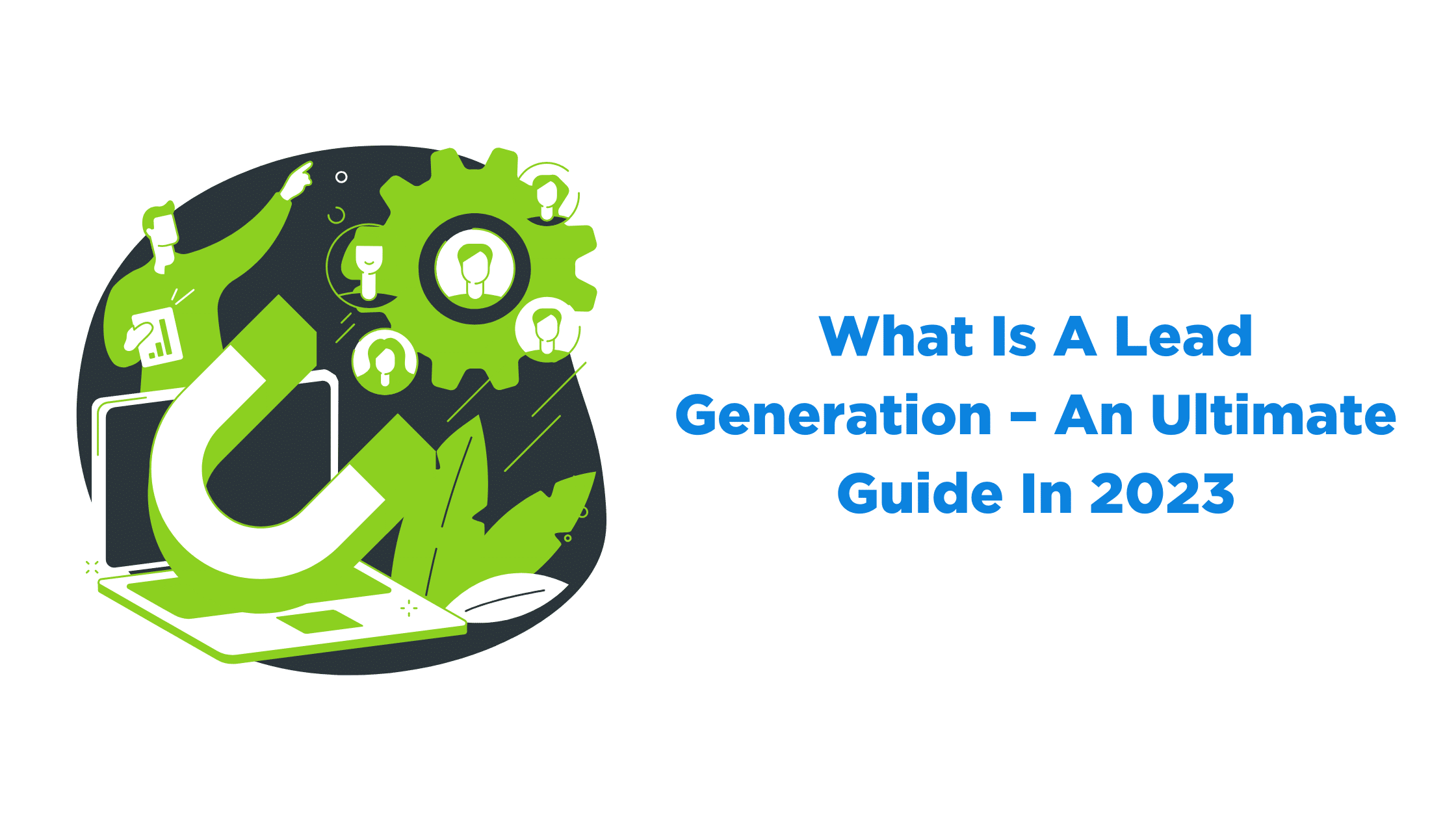“What is a Lead Generation” might be the most common question buzzing in the minds of individuals who are not in the marketing field. This article on “what is a lead generation” will educate such people and help others to brush up their knowledge on generation leads.
Lead generation involves finding and attracting new customers. It’s the first step in a sale. Lead generation aims to identify potential customers, and keep in touch with them until they make a purchase.
Lead generation involves creating a target market of potential customers. This list is constructed using demographic data and behavioral factors. These traits define your target market’s needs and preferences, allowing you to provide better products than your competitors.
What Is a Lead?
A lead is someone interested in your company’s goods or services. Perhaps they’ve already given you their contact information, they have yet to hear about your company, or they haven’t even provided you with their contact information. The only thing that matters is that they have demonstrated a passing interest in what you do and that you might be able to hire them.
What Is the Importance of Leads for Your Business?
67% of businesses consider lead generation as the key metric to determine the success of their business. Leads are a vital part of any business that wants to do well. They help your business grow and make money for you. Leads are the key to attracting more customers.
Leads help company growth in many ways. They can sell products and services, build customer relationships, and expand your customer base. They are also a great way to get customer feedback on how well your business is doing, and what areas need improvement to meet customer needs. The more qualified your leads are, the better they are for your business.
How Does a Lead Funnel Look?
The lead funnel is a visual representation of a person’s steps to becoming a lead. It’s an essential tool for marketers because it shows them how well their lead-generation efforts are working.
In general, there is no one-size-fits-all solution, but here is an example of a lead funnel that is commonly used:
- Create your client personas.
- Map the client’s journey.
- Create brand awareness.
- Drive traffic to your business.
- Gather information about the leads.
- Convert the leads into clients.
- Close the business deal.
For more details on creating an effective lead generation funnel, visit this article, How To Build an Effective Lead Generation Funnel: A Comprehensive Guide.
How To Generate Leads in the Best Way
Business success requires lead generation. If converted into customers, leads can generate consistent revenue for any company, regardless of size or industry.
However, lead generation is not always straightforward. You need to know how to find, capture, and nurture them into sales. Thus, we’ve compiled a list of lead-generation tips.
These tips can help you maximize lead generation and ROI.
- Use social media to raise awareness and new leads.
- Keep an eye on your competition.
- Gauge your lead’s level of interest.
- Use the right tools to track your leads.
- Focus on quality over quantity.
- Have multiple, enticing calls to action.
- Know the relevant lead generation avenues.
- Make use of A/B testing.
What Are the Best Ways To Qualify Leads?
Define Your Ideal Lead
Leads that are likely to become customers are the ideal leads. To start qualifying leads, first define a perfect lead. Location, industry, job title, and company size may be factors. You should also consider their budget, interest in your product or service, and decision-making time.
Gathering and targeting this data with your marketing can help you identify your business’ ideal leads. Identifying leads with a higher conversion rate allows you to focus your efforts.
Collect All Necessary Information
Getting information about potential customers can help you decide whether they’ll buy your product. You can gather this information in several ways.
Surveys and questionnaires help you understand the leads’ needs and interests. Websites and social media accounts can also reveal their history, interests, and lifestyles. Finally, communicate with leads to determine their needs by phone, email, or in person.
Collect as much information as possible on your leads. This helps you decide if they’re the right fit for your company and narrows down their needs so you can tailor marketing campaigns to each customer.
Perform Lead Scoring
Businesses’ scores determine their quality. It helps them focus on leads that are more likely to convert. Lead scoring assigns points to leads based on their interaction with you and ranks them from highest to lowest.
Lead scoring helps businesses prioritize leads. As mentioned, it also helps them focus on leads more likely to convert. The leads with the highest scores get the most attention, while the lowest scores are ignored or dropped. Lead scoring helps them understand their customers by tracking trends and analyzing customer behavior.
Lead Generation Guide Metrics to Track
To measure the success of your lead generation efforts, you must track the data and metrics that are important to you.
Here are the most critical lead generation KPIs to monitor. These metrics are essential and can help you make changes to your strategy or marketing efforts that improve the results of your overall program.
Bounce Rate: The percentage of people who visit your website once and leave without viewing any other pages.
Total Marketing Qualified Leads (MQLs): These customers have expressed interest in your brand’s products or services.
Customer Acquisition Cost (CAC): The average cost of acquiring a new customer.
Website Traffic: Traffic statistics show the number of unique visitors to your website or specific pages.
Cost Per Lead (CPL): Calculate it by dividing marketing spend by leads generated through a campaign.
The Latest Trends in Lead Generation
The majority of companies right now are swamped with a lot of work. You also manage your existing leads as you try to generate new prospects. There are times when it can be overwhelming. Check out these trends in lead generation to stay ahead of the curve:

1. The Rise of Marketing Automation
Marketing automation is a trend that has been gaining popularity in recent years. It is a software platform that automates your marketing efforts and helps you manage your contacts more effectively.
2. Artificial Intelligence in Lead Generation
AI is transforming everything, including lead generation. By using bots and chatbots that communicate independently without human intervention, AI improves campaign targeting, segmentation, and personalization.
3. Targeting the Right Audience
Getting the right audience is crucial to generating leads, as it increases the likelihood that they convert into customers. Understanding what motivates people to purchase, and how they consume content online is critical to tailoring your message effectively.
4. Utilizing Influencer Marketing
One of the most critical developments that have occurred recently in the field of lead generation is the rise of influencer marketing. Because they can communicate with a significantly broader demographic than more traditional forms of marketing, influencers are gaining an ever-increasing level of significance for businesses. They also have higher credibility and authenticity, crucial to acquiring potential customers’ trust.
Conclusion
Today’s businesses’ success or failure is directly proportional to their level of revenue. In addition, you need business leads to attract customers and generate revenue. Creating consumer interest in your company’s offering is the most crucial step.
As previously discussed, there are numerous ways to generate leads for your business, but the most crucial factor is that you actually do it.
Lead generation helps your company grow by creating new sales opportunities. The more leads you generate, the more chances you have to find new customers. This can boost revenue and profits for any company.
FAQs
1. Does lead generation require the use of software?
No. You can generate leads without software, but it is more complex and can take longer.
With software, you can automatically create lead generation forms, so your leads are filled out by people who want to contact you.
The software also allows you to centrally store all your leads, making them easy to find when needed. The software makes accessing lead information easier, and eliminates the need to search through files.
2. How to identify high-quality leads?
There are three main indicators of high-quality leads:
– Is the contact information correct?
Your company won’t get a paying customer if their phone number or email address is invalid.
– Did the prospect use your content?
Have they taken your advice since? Did they visit your website? If any of these questions are yes, your potential customer is interested in your products. They may buy now.
– Is the person your ideal customer?
This may seem obvious, but it ensures that you target people who want what you’re selling.
3. What can we do to improve lead generation?
Improve your lead generation by optimizing your website, posting on social media, and offering lead magnets, like eBooks to attract potential customers. Additionally, you could use email marketing.



